
The ultra-light, disc-braked Maserati 250F-engined TecMec F415 was the ultimate development of the long line of 2.5-litre front-engined Maserati 250F Grand Prix cars which commenced in 1954; the preceding 2-litre Maserati A6GCM F2/Grand Prix machines of 1952-53 are duly noted.
In 1957 the works team’s Piccolo 250Fs took Juan Manuel Fangio to his record-setting fifth and final world title. Soon after, with the company on its financial knees, Maserati withdrew from racing. In the best of Italian traditions it wasn’t quite a final withdrawal. In the 1958 French Grand Prix, a special lightweight 250F appeared for Fangio in what became his his final race appearance. He was fourth, and with that the Maserati works-team was no more.
The team’s chassis and transmission engineer during the latter 250F years was ex-Ferrari man Valerio Colotti (1925-January 19, 2008). As the Cooper mid-engined ascendancy began he had a new super-lightweight 250F on his drawing board. Colotti left Maserati to form his own Studio Tecnica Meccanica in Modena.
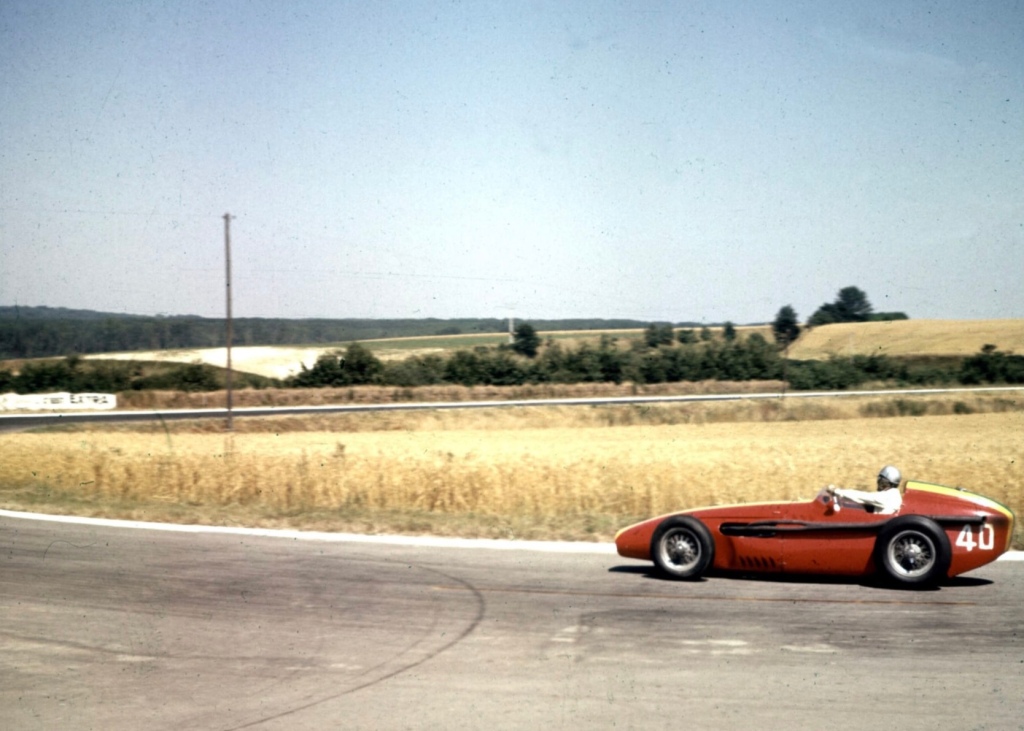
Racer, Giorgio Scarlatti approached Colotti with a view to building the ultimate 250F. Valerio set to work, fabricating a light, multi-tubular spaceframe chassis made of small diameter steel tube. He scrapped the De Dion rear rear suspension, replacing it with an independent transverse top leaf-spring and lower wishbone set up. At the front was a very un-Italian pair of Alford & Alder uprights, supported by upper and lower wishbones and coil/spring damper units, an adjustable roll-bar was incorporated. Girling discs replaced the 250F’s finned drums but the wheels remained passé Borrani wires. Scarlatti provided an ex-works 2.5-litre six-cylinder engine.
Giuseppe Consoli, an ex-works mechanic, built the car for Colotti, working in the living room of his house near Modena’s aerautodromo. When workshop space was later made available the embryo Tec-Mec F415 was wheeled out through Giuseppe’s French windows!
The car was clad in a functionally attractive, tight fitting aluminium body, the height of which was constrained a bit by the relatively tall Maserati 270bhp, DOHC, two-valve, triple-Weberised six-cylinder engine.
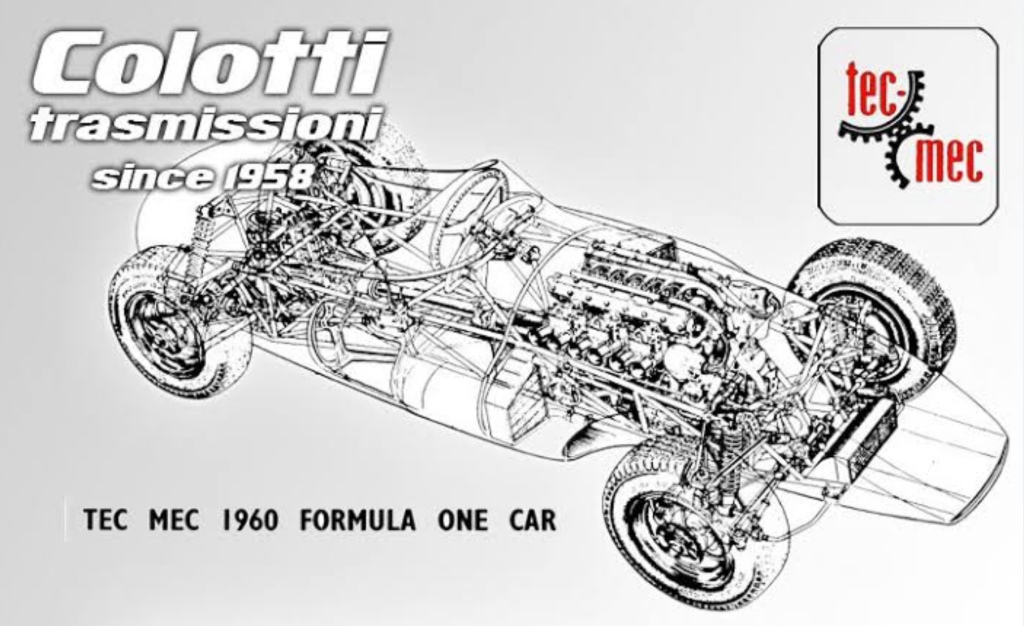
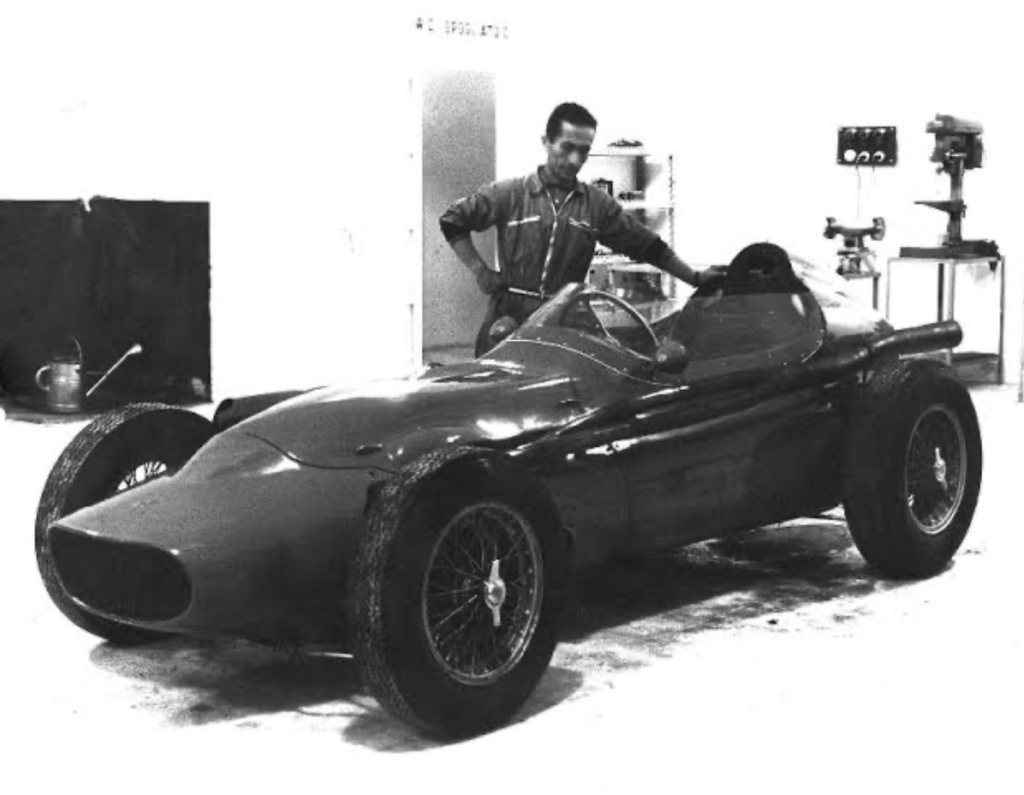
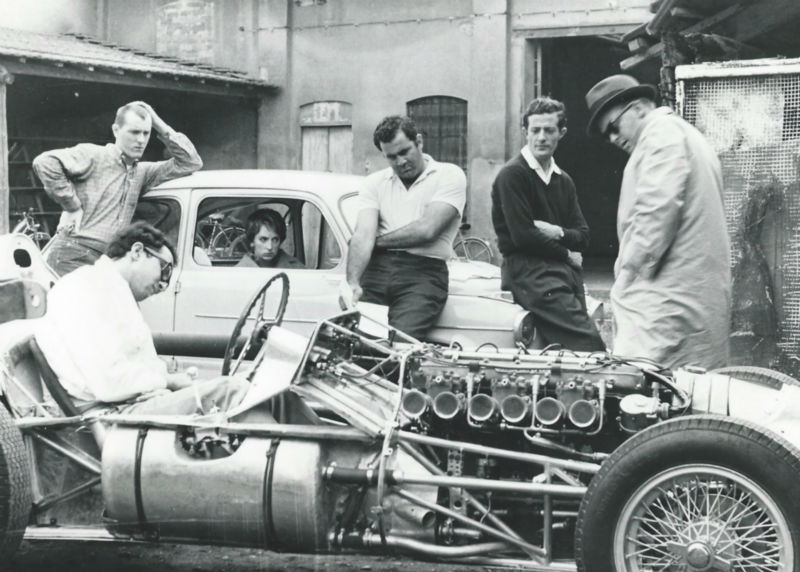
Bonhams wrote that, “In the meantime Hans Tanner, Swiss motoring journalist and entrepreneur, became involved with the project. He had been on the Modenese scene for years and was close to Maserati. He enlisted backing from Floridan racing enthusiast Gordon Pennington who lived then in Modena’s famous Hotel Reale.” Pennington intended to race an Italian car so Scarlatti sold him his interest in the Tec-Mec project.
Colotti, meanwhile, had gone into partnership with former Stirling Moss mechanic Alf Francis as ‘Gear Speed Development SpA’, with plans to build Colotti transaxles as the mid-engined revolution popped, and so too the demand for quality, reliable gearboxes.
While all of this played out, Consoli completed Tec-Mec in 1959, complete with engine #2523 purloined from a 250F Jo Bonnier had for sale.
“Under the Pennington-Tanner aegis, Studio Tecnica Meccanica changed its name to Tec-Mec Automobili. The car was tested at Modena by American driver Bob Said, Piero Drogo, Jo Bonnier and Scarlatti.”
Just like the front-engined Scarab and Aston Martin DBR4 programmes, this one was too late. The basically 1957-designed Tec-Mec became raceworthy in late 1959 just as Jack Brabham clinched the first World Championships for a mid-engined car aboard the Cooper T51 Climax 2.5 FPF.
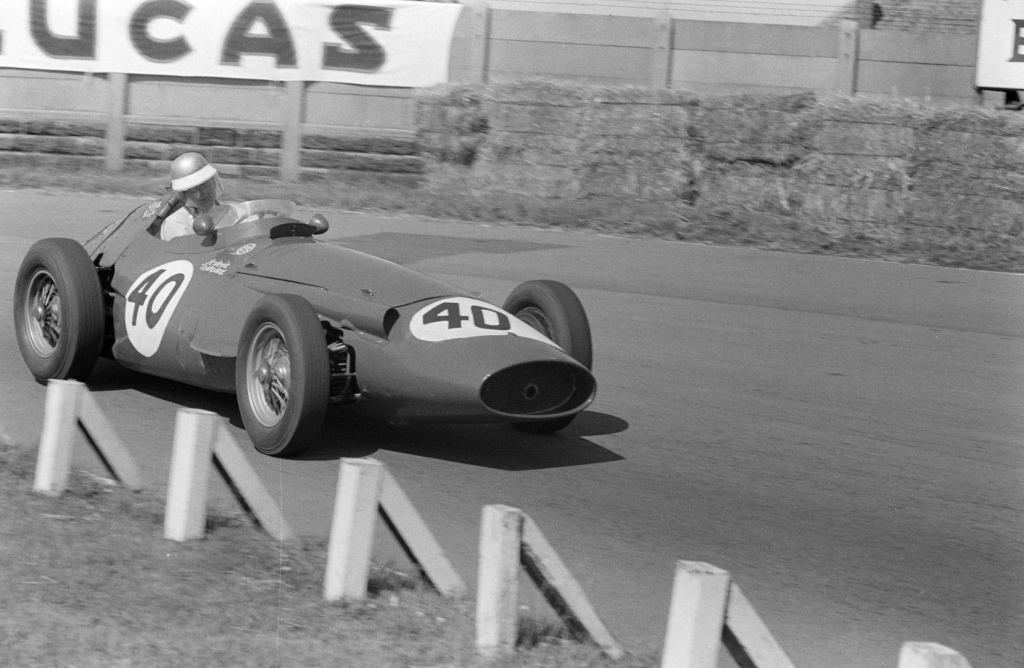
The 1959 World Championship closed with the United States Grand Prix at Sebring, Florida in December. Given it was in Gordon Pennington’s ‘back yard’ the Tec-Mec F415 was entered for Brazilian amateur – and former 250F racer – Fritz d’Orey. He qualified the Camoradi team run car 17th of 19 starters but retired after seven laps with an oil leak/engine failure.
Jesse Alexander wrote this comment about Fritz d’Oley’s performance in the car in his Sports Cars Illustrated race report. “The Tec-Mec was never driven quickly enough to show up any defects. The only time we know of it being driven fast was when Jo Bonnier took it around the Modena Autodromo last summer. His comments were not all that favourable. He complained of, among other things, a flexing chassis.”
More about D’Orey here: https://www.f1forgottendrivers.com/drivers/fritz-dorey/
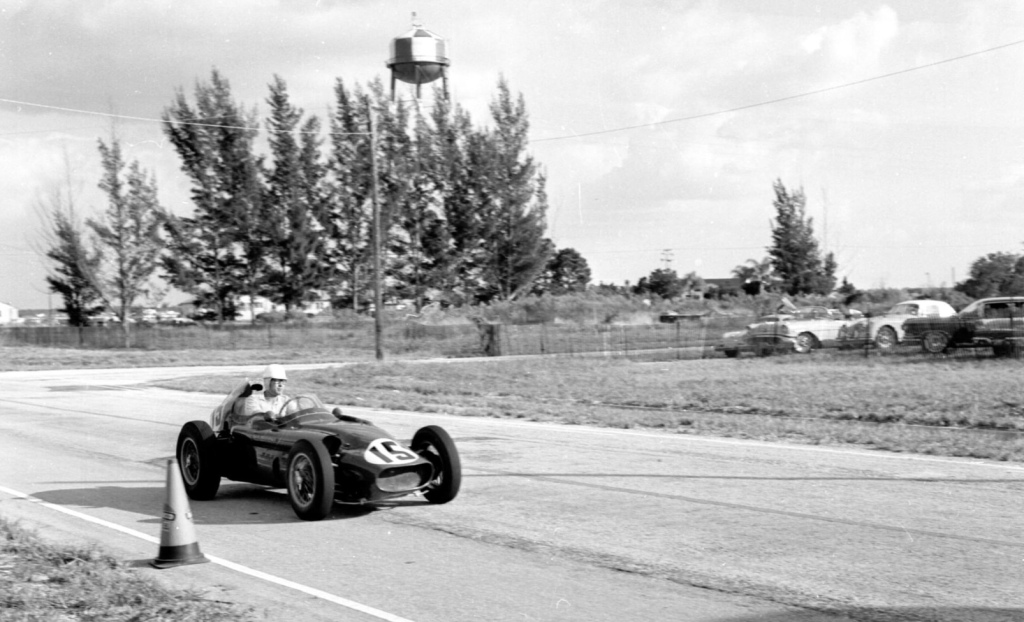
After repair, the car was taken Daytona Speedway for a record attempt but D’Orey was injured in another car. Then Pennington lost interest and the project was abandoned. The car lay on a trailer in a Miami garden until early 1967 when it was acquired complete with spares – including unopened boxes of new parts – by Tom Wheatcroft for what became The Donington Collection.
After restoration he drove the car regularly in open test days at Silverstone and Oulton Park before crashing it heavily into a parked ambulance after spinning-off at Silverstone. After the car was rebuilt it was driven by engineer/restorer Tony Merrick in VSCC events while residing in the Donington Collection. After sale by Wheatcroft in the 1990s the car has been a formidable historic racer.
Etcetera…
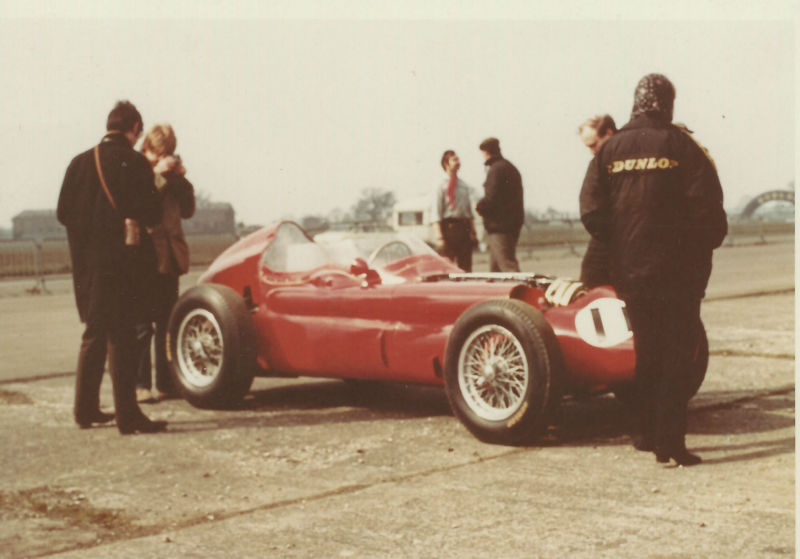
Tec-Mec F415 – Tec-Mec Project 11 – on its first appearance, perhaps, after its restoration.
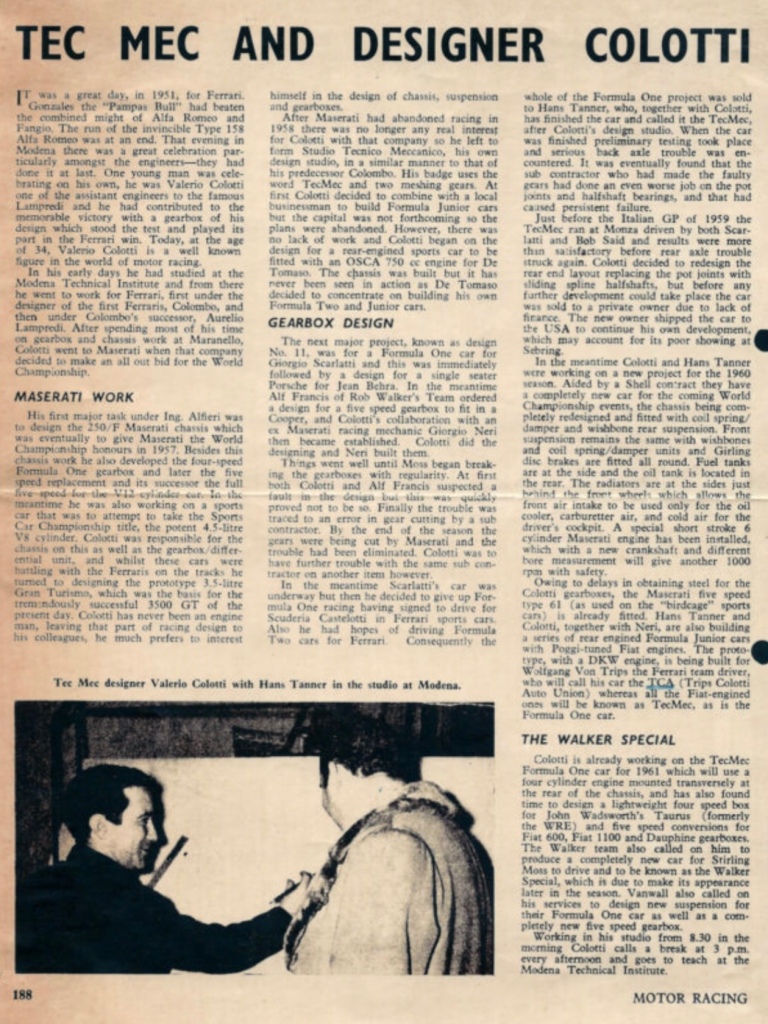
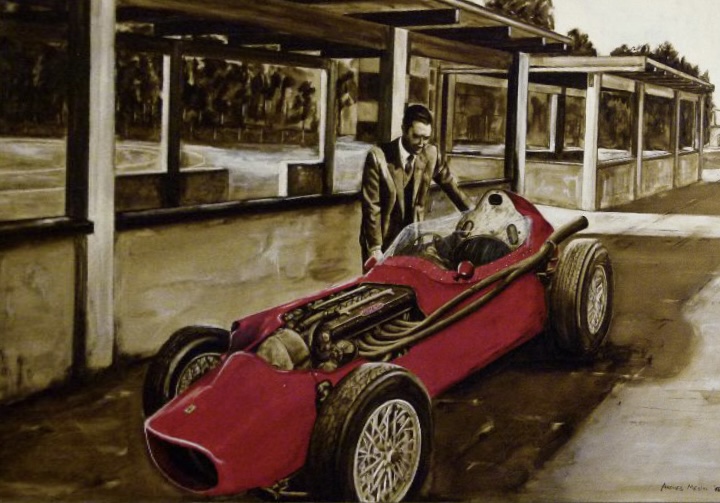
Credits…
Bonhams, MotorSport Images, Colotti Transmissioni, Sports Cars Illustrated March 1960 via Stephen Dalton, colotti.com
Tailpieces…
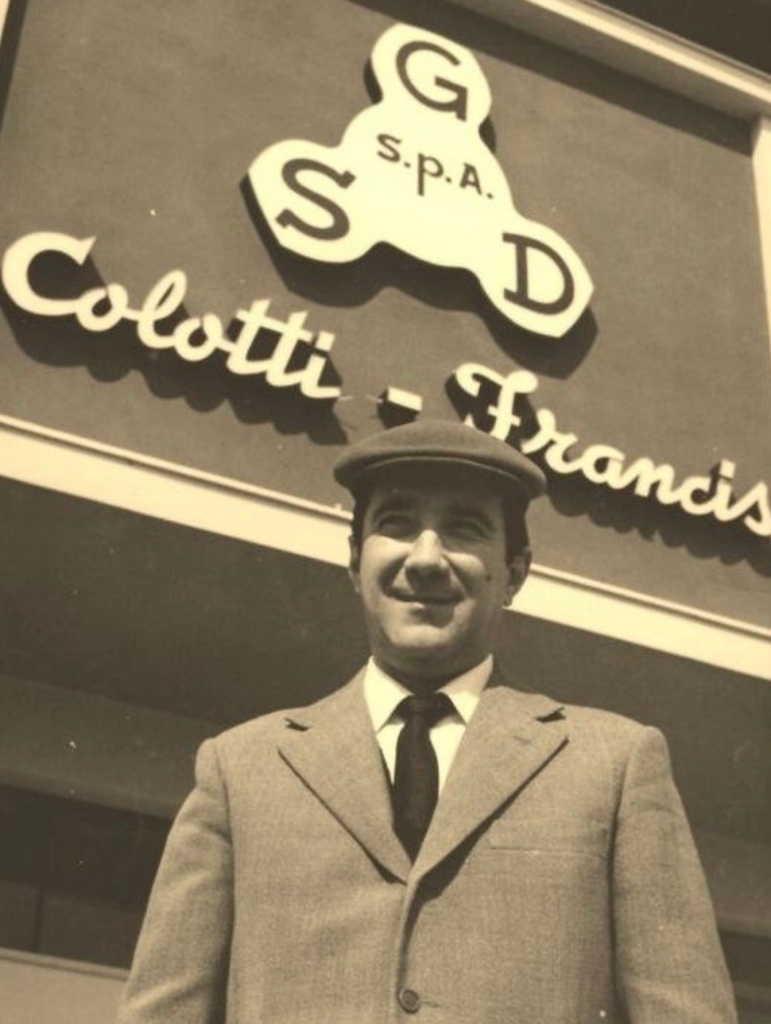
Finito…
Rod Coppins, a popular and successful amateur racer in New Zealand in the 1960s and 1970s, had an impressive racing career. He piloted a diverse range of cars both in New Zealand and Australia. (Most known for his famous Zephyr Corvette Allcomers saloon.)
He somehow acquired a Tec-Mec Maserati and replaced the 2.5liter six with a Chevrolet V8. He raced it in sports car and single seater during the 1961/62 and 1962/1963 seasons.
(20+) THAT CORVETTE ENGINE. When the “Tec Mec”… – Classic Auto News | Facebook
Another name ~ Bob Said. Bob was a sports car racer and Olympic bobsledder. His son Boris Said (born September 18, 1962) was an American professional racing driver. He has competed in a variety of disciplines including stock cars, sports cars and touring cars.
He served as a factory BMW MotorSport driver, claiming the Rolex Sports Car Series GT drivers title in 2004. He also won overall at the 24 Hours Nürburgring in 2005 and the Six Hours of The Glen in 2006
Almost correct. Rod Coppins was the second owner of the NZ “Tec Mec”. The first was Johnny Mansel who bought the car off Hans Tanner/Colotti — it was a 250F Maserati that Tanner “borrowed” off another NZer (Ross Jensen) who had sent the car back to Italy for a “freshen up”. Tanner (and Colotti) repowered the car with an ex Camoradi works Corvette engine and shipped it off to Mansel who had a miserable time with this beast and sold it to Coppins who had an even more miserable time, crashing it and killing two track workers. Tanner had to find another 250F for Jensen. .. .
Thanks Allan.
Did you click on the link…
(20+) THAT CORVETTE ENGINE. When the “Tec Mec”… – Classic Auto News | Facebook
Respectfully,
Dennis
[…] Remember those days before carefully homogenised and pasteurised, hermetically clean and certified absolute sameness and dull-shit-boredom. Where did it all go wrong? See here for a story on this car: https://primotipo.com/2024/03/11/tec-mec-f415-maserati/ […]